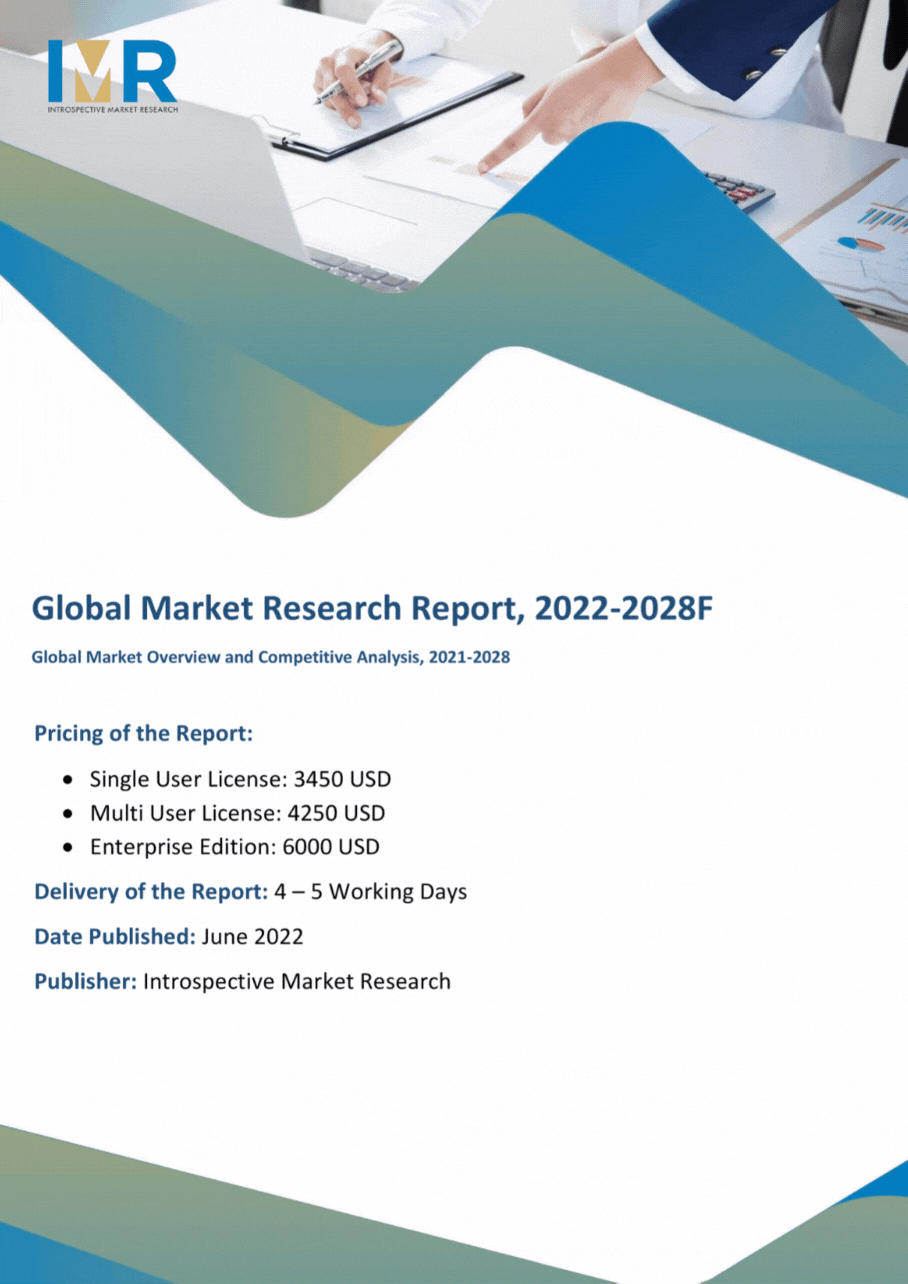ePayment System Market Synopsis
The Global EPayment System Market size is expected to grow from USD 82.39 billion in 2022 to USD 347.24 billion by 2030, at a CAGR of 19.7% during the forecast period (2023-2030).
An ePayment system refers to a digital platform that enables electronic transactions, allowing individuals and businesses to send and receive payments electronically over the internet. It facilitates online purchases, bill payments, fund transfers, and various financial transactions without the need for physical cash or checks.
- Advantages of ePayment systems include heightened convenience and accessibility. Users can conduct transactions anytime, anywhere, reducing geographical limitations. They offer speed and efficiency, enabling instant transfers and reducing processing times compared to traditional methods. Moreover, ePayment systems enhance security by employing encryption and authentication measures, reducing risks associated with carrying physical cash.
- These systems find extensive application across diverse sectors. In e-commerce, they're integral for online purchases, fostering seamless and secure transactions between buyers and sellers. Additionally, businesses leverage ePayment systems for payroll management, enabling direct salary deposits. Government entities utilize them for tax collections and disbursements, streamlining financial processes and minimizing bureaucracy.
- In essence, ePayment systems revolutionize the way financial transactions occur, promoting efficiency, security, and accessibility across various domains, fostering a digital economy that thrives on convenience and reliability.

ePayment System Market Trend Analysis
Growing Smartphone Penetration and Mobile Wallets
- With an ever-increasing number of individuals owning smartphones, the accessibility and convenience of conducting financial transactions through these devices have expanded exponentially.
- Smartphones serve as the primary gateway for users to access mobile wallet applications, which offer seamless and secure avenues for electronic payments. These mobile wallets, powered by advancements in technology, enable users to store payment information, conduct transactions, and manage finances conveniently from their handheld devices.
- Moreover, the integration of various functionalities within mobile wallets, such as loyalty programs, ticket bookings, and peer-to-peer payments, further incentivizes their adoption. As a result, consumers are drawn to the simplicity and versatility of mobile wallets, leading to a significant upsurge in ePayment transactions.
- This growing reliance on smartphones as a hub for financial activities has reshaped consumer behavior, fostering a preference for on-the-go, contactless payment experiences. The continuous innovation in mobile wallet features, coupled with the expanding reach of smartphones globally, underscores their profound impact as a major driver fueling the sustained growth of the ePayment market.
Integration with Emerging Technologies
- The integration of ePayment systems with emerging technologies represents a significant opportunity for the market, fostering innovation and expanding the scope of digital payment solutions. Technologies such as artificial intelligence (AI), machine learning, blockchain, and the Internet of Things (IoT) present avenues for enhancing the capabilities and reach of ePayment platforms.
- AI and machine learning algorithms can revolutionize fraud detection and risk management within ePayment systems, offering real-time analysis of transaction patterns to identify and prevent fraudulent activities. Moreover, these technologies enable personalized user experiences, optimizing recommendations and services based on individual preferences and behaviors.
- Blockchain, known for its decentralized and secure nature, offers opportunities for transparent and immutable transaction records. Integration of blockchain into ePayment systems can streamline cross-border transactions, reduce processing times, and enhance security, catering to the demand for faster and more secure global payments.
- The IoT integration holds promise by enabling connected devices to facilitate seamless payments. Smart devices such as wearables, connected cars, and home appliances could become payment endpoints, allowing users to make transactions effortlessly in various contexts.
- The convergence of ePayment systems with these emerging technologies not only enhances the efficiency and security of transactions but also opens doors to innovative payment methods and user experiences. Providers that adeptly harness the potential of these technologies stand to offer cutting-edge solutions, meeting the evolving needs of consumers and businesses while driving the growth and evolution of the ePayment market.
ePayment System Market Segment Analysis:
ePayment System Market Segmented on the basis of type, deployment mode, and end-users.
By Type, Payment Wallet Solution segment is expected to dominate the market during the forecast period
- During the forecast period, the Payment Wallet Solution segment is anticipated to dominate the ePayment market due to several factors. Payment wallets, also known as digital wallets or mobile wallets, offer a user-friendly and convenient platform for conducting transactions. The increasing adoption of smartphones, coupled with the ease of use and security provided by payment wallets, drives their prominence.
- These wallets allow users to store multiple payment methods, loyalty cards, and even personal identification documents in a single digital platform. Their versatility for online purchases, peer-to-peer transfers, bill payments, and contactless transactions contributes to their widespread acceptance. Moreover, the integration of additional services like loyalty programs, discounts, and seamless checkout experiences further solidifies their dominance in the market.
- As consumer preferences shift towards hassle-free and secure payment methods, the convenience and multifunctionality of payment wallets position them as a primary choice, leading to their expected dominance in the ePayment market.
By Application, BFSI segment held the largest market share of 25% in 2022
- The BFSI (Banking, Financial Services, and Insurance) segment has emerged as a dominant force in the ePayment market, holding the largest market share for several reasons. Financial institutions, including banks, have been early adopters of digital payment solutions to streamline their operations and offer convenient services to customers.
- BFSI organizations leverage ePayment systems for various purposes, including online banking, fund transfers, loan repayments, and investment transactions. The sector's adoption of ePayment solutions is driven by the need to enhance customer experiences, reduce operational costs, and ensure secure and efficient transactions.
- Moreover, stringent regulatory requirements in the financial industry necessitate robust security measures, and ePayment systems offer advanced encryption and authentication mechanisms, aligning with these compliance needs.
- The BFSI sector's dominance in ePayment adoption is also attributed to its ability to offer a wide array of financial services through digital channels, catering to the evolving preferences of tech-savvy customers seeking seamless and accessible payment options. As a result, the BFSI segment holds the largest market share in the ePayment landscape.
ePayment System Market Regional Insights:
Asia Pacific is Expected to Dominate the Market Over the Forecast period
- Asia Pacific is poised to exert significant dominance in the ePayment market over the forecast period due to several key factors. The region's rapid economic development, burgeoning population, increasing smartphone penetration, and the ongoing digital transformation across various industries contribute to this expected dominance.
- Countries in the Asia Pacific region, including China, India, Japan, South Korea, and Southeast Asian nations, witness a substantial shift towards digital payments driven by the adoption of advanced technologies and supportive government initiatives. The rising preference for convenience, coupled with the proliferation of e-commerce and mobile banking, fuels the growth of ePayment systems in this region.
- Furthermore, the diverse range of payment platforms and the emergence of innovative fintech solutions cater to the diverse needs of consumers and businesses in Asia Pacific. The region's dynamic and evolving market landscape, combined with the growing demand for secure, fast, and reliable electronic payment methods, positions Asia Pacific to lead the ePayment market during the forecast period.
ePayment System Market Top Key Players:
- Aci Worldwide (US)
- Aliant Payments (US)
- Alipay (China)
- Apple Pay (US)
- Fis (US)
- Fiserv (US)
- Global Payments (US)
- Intuit (US)
- Jpmorgan Chase (US)
- Mastercard (US)
- Paypal (US)
- Paysafe (UK)
- Paytrace (US)
- Payu (Netherlands)
- Spreedly (US)
- Square (US)
- Stripe (US)
- Visa (US)
- Worldline (France)
- 2checkout (US) and Other Major Players
Key Industry Developments in the ePayment System Market:
- In December 2023, Basata launched new e-payment services to achieve financial inclusion strategy.
- In December 2023, The Philippine Consulate General in Toronto formally launched its ePayment facility, fulfilling one of Consul General Angelica Escalona’s promises to make transactions with the Consulate General more convenient for its clients.
- In November 2023, IndusInd Bank goes live with RuPay Credit Card on UPI with the launch of ‘IndusInd Bank Platinum RuPay Credit Card’, in collaboration with the National Payments Corporation of India (NPCI).
|
Global ePayment System Market |
|||
|
Base Year: |
2022 |
Forecast Period: |
2023-2030 |
|
Historical Data: |
2017 to 2022 |
Market Size in 2022: |
USD 82.39 Bn. |
|
Forecast Period 2023-32 CAGR: |
19.7 % |
Market Size in 2030: |
USD 347.24 Bn. |
|
Segments Covered: |
By Type |
|
|
|
By Deployment Mode |
|
||
|
By End User |
|
||
|
By Region |
|
||
|
Key Market Drivers: |
|
||
|
Key Market Restraints: |
|
||
|
Key Opportunities: |
|
||
|
Companies Covered in the report: |
|
||
- INTRODUCTION
- RESEARCH OBJECTIVES
- RESEARCH METHODOLOGY
- RESEARCH PROCESS
- SCOPE AND COVERAGE
- Market Definition
- Key Questions Answered
- MARKET SEGMENTATION
- EXECUTIVE SUMMARY
- MARKET OVERVIEW
- GROWTH OPPORTUNITIES BY SEGMENT
- MARKET LANDSCAPE
- PORTER’S FIVE FORCES ANALYSIS
- Bargaining Power Of Supplier
- Threat Of New Entrants
- Threat Of Substitutes
- Competitive Rivalry
- Bargaining Power Among Buyers
- INDUSTRY VALUE CHAIN ANALYSIS
- MARKET DYNAMICS
- Drivers
- Restraints
- Opportunities
- Challenges
- MARKET TREND ANALYSIS
- REGULATORY LANDSCAPE
- PESTLE ANALYSIS
- PRICE TREND ANALYSIS
- PATENT ANALYSIS
- TECHNOLOGY EVALUATION
- MARKET IMPACT OF THE RUSSIA-UKRAINE WAR
- Geopolitical Market Disruptions
- Supply Chain Disruptions
- Instability in Emerging Markets
- ECOSYSTEM
- PORTER’S FIVE FORCES ANALYSIS
- EPAYMENT SYSTEM MARKET BY TYPE (2016-2030)
- EPAYMENT SYSTEM MARKET SNAPSHOT AND GROWTH ENGINE
- MARKET OVERVIEW
- POINT OF SALE (POS) SOLUTION
- Introduction And Market Overview
- Historic And Forecasted Market Size in Value (2016 – 2030F)
- Historic And Forecasted Market Size in Volume (2016 – 2030F)
- Key Market Trends, Growth Factors And Opportunities
- Geographic Segmentation Analysis
- PAYMENT GATEWAY SOLUTION
- PAYMENT PROCESSING SOLUTION
- PAYMENT WALLET SOLUTION
- PAYMENT SECURITY & FRAUD MANAGEMENT SOLUTION
- EPAYMENT SYSTEM MARKET BY DEPLOYMENT MODE (2016-2030)
- EPAYMENT SYSTEM MARKET SNAPSHOT AND GROWTH ENGINE
- MARKET OVERVIEW
- CLOUD-BASED
- Introduction And Market Overview
- Historic And Forecasted Market Size in Value (2016 – 2030F)
- Historic And Forecasted Market Size in Volume (2016 – 2030F)
- Key Market Trends, Growth Factors And Opportunities
- Geographic Segmentation Analysis
- ON-PREMISES
- EPAYMENT SYSTEM MARKET BY END USER (2016-2030)
- EPAYMENT SYSTEM MARKET SNAPSHOT AND GROWTH ENGINE
- MARKET OVERVIEW
- BFSI
- Introduction And Market Overview
- Historic And Forecasted Market Size in Value (2016 – 2030F)
- Historic And Forecasted Market Size in Volume (2016 – 2030F)
- Key Market Trends, Growth Factors And Opportunities
- Geographic Segmentation Analysis
- MEDIA & ENTERTAINMENT
- RETAIL
- HEALTHCARE
- IT & TELECOM
- TRANSPORTATION & LOGISTICS
- COMPANY PROFILES AND COMPETITIVE ANALYSIS
- COMPETITIVE LANDSCAPE
- Competitive Positioning
- EPAYMENT SYSTEM Market Share By Manufacturer (2022)
- Industry BCG Matrix
- Heat Map Analysis
- Mergers & Acquisitions
- ACI WORLDWIDE (US)
- Company Overview
- Key Executives
- Company Snapshot
- Role of the Company in the Market
- Sustainability and Social Responsibility
- Operating Business Segments
- Product Portfolio
- Business Performance (Production Volume, Sales Volume, Sales Margin, Production Capacity, Capacity Utilization Rate)
- Key Strategic Moves And Recent Developments
- SWOT Analysis
- ALIANT PAYMENTS (US)
- ALIPAY (CHINA)
- APPLE PAY (US)
- FIS (US)
- FISERV (US)
- GLOBAL PAYMENTS (US)
- INTUIT (US)
- JPMORGAN CHASE (US)
- MASTERCARD (US)
- PAYPAL (US)
- PAYSAFE (UK)
- PAYTRACE (US)
- PAYU (NETHERLANDS)
- SPREEDLY (US)
- SQUARE (US)
- STRIPE (US)
- VISA (US)
- WORLDLINE (FRANCE)
- 2CHECKOUT (US)
- COMPETITIVE LANDSCAPE
- GLOBAL EPAYMENT SYSTEM MARKET BY REGION
- OVERVIEW
- NORTH AMERICA
- Key Market Trends, Growth Factors And Opportunities
- Key Manufacturers
- Historic And Forecasted Market Size By TYPE
- Historic And Forecasted Market Size By DEPLOYMENT MODE
- Historic And Forecasted Market Size By END USER
- Historic And Forecasted Market Size By Country
- USA
- Canada
- Mexico
- EASTERN EUROPE
- Key Market Trends, Growth Factors And Opportunities
- Key Manufacturers
- Historic And Forecasted Market Size By Segments
- Historic And Forecasted Market Size By Country
- Russia
- Bulgaria
- The Czech Republic
- Hungary
- Poland
- Romania
- Rest Of Eastern Europe
- WESTERN EUROPE
- Key Market Trends, Growth Factors And Opportunities
- Key Manufacturers
- Historic And Forecasted Market Size By Segments
- Historic And Forecasted Market Size By Country
- Germany
- United Kingdom
- France
- The Netherlands
- Italy
- Spain
- Rest Of Western Europe
- ASIA PACIFIC
- Key Market Trends, Growth Factors And Opportunities
- Key Manufacturers
- Historic And Forecasted Market Size By Segments
- Historic And Forecasted Market Size By Country
- China
- India
- Japan
- South Korea
- Malaysia
- Thailand
- Vietnam
- The Philippines
- Australia
- New-Zealand
- Rest Of APAC
- MIDDLE EAST & AFRICA
- Key Market Trends, Growth Factors And Opportunities
- Key Manufacturers
- Historic And Forecasted Market Size By Segments
- Historic And Forecasted Market Size By Country
- Turkey
- Bahrain
- Kuwait
- Saudi Arabia
- Qatar
- UAE
- Israel
- South Africa
- SOUTH AMERICA
- Key Market Trends, Growth Factors And Opportunities
- Key Manufacturers
- Historic And Forecasted Market Size By Segments
- Historic And Forecasted Market Size By Country
- Brazil
- Argentina
- Rest of South America
- INVESTMENT ANALYSIS
- ANALYST VIEWPOINT AND CONCLUSION
- Recommendations and Concluding Analysis
- Potential Market Strategies
|
Global ePayment System Market |
|||
|
Base Year: |
2022 |
Forecast Period: |
2023-2030 |
|
Historical Data: |
2017 to 2022 |
Market Size in 2022: |
USD 82.39 Bn. |
|
Forecast Period 2023-32 CAGR: |
19.7 % |
Market Size in 2030: |
USD 347.24 Bn. |
|
Segments Covered: |
By Type |
|
|
|
By Deployment Mode |
|
||
|
By End User |
|
||
|
By Region |
|
||
|
Key Market Drivers: |
|
||
|
Key Market Restraints: |
|
||
|
Key Opportunities: |
|
||
|
Companies Covered in the report: |
|
||
LIST OF TABLES
TABLE 001. EXECUTIVE SUMMARY
TABLE 002. EPAYMENT SYSTEM MARKET BARGAINING POWER OF SUPPLIERS
TABLE 003. EPAYMENT SYSTEM MARKET BARGAINING POWER OF CUSTOMERS
TABLE 004. EPAYMENT SYSTEM MARKET COMPETITIVE RIVALRY
TABLE 005. EPAYMENT SYSTEM MARKET THREAT OF NEW ENTRANTS
TABLE 006. EPAYMENT SYSTEM MARKET THREAT OF SUBSTITUTES
TABLE 007. EPAYMENT SYSTEM MARKET BY TYPE
TABLE 008. POINT OF SALE (POS) SOLUTION MARKET OVERVIEW (2016-2028)
TABLE 009. PAYMENT GATEWAY SOLUTION MARKET OVERVIEW (2016-2028)
TABLE 010. PAYMENT PROCESSING SOLUTION MARKET OVERVIEW (2016-2028)
TABLE 011. PAYMENT WALLET SOLUTION MARKET OVERVIEW (2016-2028)
TABLE 012. PAYMENT SECURITY & FRAUD MANAGEMENT SOLUTION MARKET OVERVIEW (2016-2028)
TABLE 013. EPAYMENT SYSTEM MARKET BY SERVICES
TABLE 014. PROFESSIONAL SERVICES MARKET OVERVIEW (2016-2028)
TABLE 015. MANAGED SERVICES MARKET OVERVIEW (2016-2028)
TABLE 016. EPAYMENT SYSTEM MARKET BY DEPLOYMENT
TABLE 017. CLOUD-BASED MARKET OVERVIEW (2016-2028)
TABLE 018. ON-PREMISES MARKET OVERVIEW (2016-2028)
TABLE 019. EPAYMENT SYSTEM MARKET BY INDUSTRY
TABLE 020. BFSI MARKET OVERVIEW (2016-2028)
TABLE 021. MEDIA & ENTERTAINMENT MARKET OVERVIEW (2016-2028)
TABLE 022. RETAIL MARKET OVERVIEW (2016-2028)
TABLE 023. HEALTHCARE MARKET OVERVIEW (2016-2028)
TABLE 024. IT & TELECOM MARKET OVERVIEW (2016-2028)
TABLE 025. TRANSPORTATION & LOGISTICS MARKET OVERVIEW (2016-2028)
TABLE 026. OTHERS MARKET OVERVIEW (2016-2028)
TABLE 027. NORTH AMERICA EPAYMENT SYSTEM MARKET, BY TYPE (2016-2028)
TABLE 028. NORTH AMERICA EPAYMENT SYSTEM MARKET, BY SERVICES (2016-2028)
TABLE 029. NORTH AMERICA EPAYMENT SYSTEM MARKET, BY DEPLOYMENT (2016-2028)
TABLE 030. NORTH AMERICA EPAYMENT SYSTEM MARKET, BY INDUSTRY (2016-2028)
TABLE 031. N EPAYMENT SYSTEM MARKET, BY COUNTRY (2016-2028)
TABLE 032. EUROPE EPAYMENT SYSTEM MARKET, BY TYPE (2016-2028)
TABLE 033. EUROPE EPAYMENT SYSTEM MARKET, BY SERVICES (2016-2028)
TABLE 034. EUROPE EPAYMENT SYSTEM MARKET, BY DEPLOYMENT (2016-2028)
TABLE 035. EUROPE EPAYMENT SYSTEM MARKET, BY INDUSTRY (2016-2028)
TABLE 036. EPAYMENT SYSTEM MARKET, BY COUNTRY (2016-2028)
TABLE 037. ASIA PACIFIC EPAYMENT SYSTEM MARKET, BY TYPE (2016-2028)
TABLE 038. ASIA PACIFIC EPAYMENT SYSTEM MARKET, BY SERVICES (2016-2028)
TABLE 039. ASIA PACIFIC EPAYMENT SYSTEM MARKET, BY DEPLOYMENT (2016-2028)
TABLE 040. ASIA PACIFIC EPAYMENT SYSTEM MARKET, BY INDUSTRY (2016-2028)
TABLE 041. EPAYMENT SYSTEM MARKET, BY COUNTRY (2016-2028)
TABLE 042. MIDDLE EAST & AFRICA EPAYMENT SYSTEM MARKET, BY TYPE (2016-2028)
TABLE 043. MIDDLE EAST & AFRICA EPAYMENT SYSTEM MARKET, BY SERVICES (2016-2028)
TABLE 044. MIDDLE EAST & AFRICA EPAYMENT SYSTEM MARKET, BY DEPLOYMENT (2016-2028)
TABLE 045. MIDDLE EAST & AFRICA EPAYMENT SYSTEM MARKET, BY INDUSTRY (2016-2028)
TABLE 046. EPAYMENT SYSTEM MARKET, BY COUNTRY (2016-2028)
TABLE 047. SOUTH AMERICA EPAYMENT SYSTEM MARKET, BY TYPE (2016-2028)
TABLE 048. SOUTH AMERICA EPAYMENT SYSTEM MARKET, BY SERVICES (2016-2028)
TABLE 049. SOUTH AMERICA EPAYMENT SYSTEM MARKET, BY DEPLOYMENT (2016-2028)
TABLE 050. SOUTH AMERICA EPAYMENT SYSTEM MARKET, BY INDUSTRY (2016-2028)
TABLE 051. EPAYMENT SYSTEM MARKET, BY COUNTRY (2016-2028)
TABLE 052. GOOGLE INC.: SNAPSHOT
TABLE 053. GOOGLE INC.: BUSINESS PERFORMANCE
TABLE 054. GOOGLE INC.: PRODUCT PORTFOLIO
TABLE 055. GOOGLE INC.: KEY STRATEGIC MOVES AND DEVELOPMENTS
TABLE 055. AMAZON INC.: SNAPSHOT
TABLE 056. AMAZON INC.: BUSINESS PERFORMANCE
TABLE 057. AMAZON INC.: PRODUCT PORTFOLIO
TABLE 058. AMAZON INC.: KEY STRATEGIC MOVES AND DEVELOPMENTS
TABLE 058. APPLE PAY: SNAPSHOT
TABLE 059. APPLE PAY: BUSINESS PERFORMANCE
TABLE 060. APPLE PAY: PRODUCT PORTFOLIO
TABLE 061. APPLE PAY: KEY STRATEGIC MOVES AND DEVELOPMENTS
TABLE 061. GEMALTO: SNAPSHOT
TABLE 062. GEMALTO: BUSINESS PERFORMANCE
TABLE 063. GEMALTO: PRODUCT PORTFOLIO
TABLE 064. GEMALTO: KEY STRATEGIC MOVES AND DEVELOPMENTS
TABLE 064. VISA INC.: SNAPSHOT
TABLE 065. VISA INC.: BUSINESS PERFORMANCE
TABLE 066. VISA INC.: PRODUCT PORTFOLIO
TABLE 067. VISA INC.: KEY STRATEGIC MOVES AND DEVELOPMENTS
TABLE 067. PAYPAL HOLDINGS: SNAPSHOT
TABLE 068. PAYPAL HOLDINGS: BUSINESS PERFORMANCE
TABLE 069. PAYPAL HOLDINGS: PRODUCT PORTFOLIO
TABLE 070. PAYPAL HOLDINGS: KEY STRATEGIC MOVES AND DEVELOPMENTS
TABLE 070. WIPRO: SNAPSHOT
TABLE 071. WIPRO: BUSINESS PERFORMANCE
TABLE 072. WIPRO: PRODUCT PORTFOLIO
TABLE 073. WIPRO: KEY STRATEGIC MOVES AND DEVELOPMENTS
TABLE 073. HEARTLAND PAYMENT SYSTEMS: SNAPSHOT
TABLE 074. HEARTLAND PAYMENT SYSTEMS: BUSINESS PERFORMANCE
TABLE 075. HEARTLAND PAYMENT SYSTEMS: PRODUCT PORTFOLIO
TABLE 076. HEARTLAND PAYMENT SYSTEMS: KEY STRATEGIC MOVES AND DEVELOPMENTS
TABLE 076. VLNCOMM: SNAPSHOT
TABLE 077. VLNCOMM: BUSINESS PERFORMANCE
TABLE 078. VLNCOMM: PRODUCT PORTFOLIO
TABLE 079. VLNCOMM: KEY STRATEGIC MOVES AND DEVELOPMENTS
TABLE 079. WIRECARD AG: SNAPSHOT
TABLE 080. WIRECARD AG: BUSINESS PERFORMANCE
TABLE 081. WIRECARD AG: PRODUCT PORTFOLIO
TABLE 082. WIRECARD AG: KEY STRATEGIC MOVES AND DEVELOPMENTS
TABLE 082. GENERAL ELECTRIC: SNAPSHOT
TABLE 083. GENERAL ELECTRIC: BUSINESS PERFORMANCE
TABLE 084. GENERAL ELECTRIC: PRODUCT PORTFOLIO
TABLE 085. GENERAL ELECTRIC: KEY STRATEGIC MOVES AND DEVELOPMENTS
TABLE 085. JPMORGAN CHASE: SNAPSHOT
TABLE 086. JPMORGAN CHASE: BUSINESS PERFORMANCE
TABLE 087. JPMORGAN CHASE: PRODUCT PORTFOLIO
TABLE 088. JPMORGAN CHASE: KEY STRATEGIC MOVES AND DEVELOPMENTS
TABLE 088. OBERTHUR TECHNOLOGIES: SNAPSHOT
TABLE 089. OBERTHUR TECHNOLOGIES: BUSINESS PERFORMANCE
TABLE 090. OBERTHUR TECHNOLOGIES: PRODUCT PORTFOLIO
TABLE 091. OBERTHUR TECHNOLOGIES: KEY STRATEGIC MOVES AND DEVELOPMENTS
TABLE 091. GIESECKE AND DEVRIENT GMBH: SNAPSHOT
TABLE 092. GIESECKE AND DEVRIENT GMBH: BUSINESS PERFORMANCE
TABLE 093. GIESECKE AND DEVRIENT GMBH: PRODUCT PORTFOLIO
TABLE 094. GIESECKE AND DEVRIENT GMBH: KEY STRATEGIC MOVES AND DEVELOPMENTS
TABLE 094. INTUIT: SNAPSHOT
TABLE 095. INTUIT: BUSINESS PERFORMANCE
TABLE 096. INTUIT: PRODUCT PORTFOLIO
TABLE 097. INTUIT: KEY STRATEGIC MOVES AND DEVELOPMENTS
TABLE 097. PURELIFI: SNAPSHOT
TABLE 098. PURELIFI: BUSINESS PERFORMANCE
TABLE 099. PURELIFI: PRODUCT PORTFOLIO
TABLE 100. PURELIFI: KEY STRATEGIC MOVES AND DEVELOPMENTS
TABLE 100. INGENICO GROUP SA: SNAPSHOT
TABLE 101. INGENICO GROUP SA: BUSINESS PERFORMANCE
TABLE 102. INGENICO GROUP SA: PRODUCT PORTFOLIO
TABLE 103. INGENICO GROUP SA: KEY STRATEGIC MOVES AND DEVELOPMENTS
TABLE 103. ON TRACK INNOVATIONS LTD.: SNAPSHOT
TABLE 104. ON TRACK INNOVATIONS LTD.: BUSINESS PERFORMANCE
TABLE 105. ON TRACK INNOVATIONS LTD.: PRODUCT PORTFOLIO
TABLE 106. ON TRACK INNOVATIONS LTD.: KEY STRATEGIC MOVES AND DEVELOPMENTS
TABLE 106. 2CHECKOUT: SNAPSHOT
TABLE 107. 2CHECKOUT: BUSINESS PERFORMANCE
TABLE 108. 2CHECKOUT: PRODUCT PORTFOLIO
TABLE 109. 2CHECKOUT: KEY STRATEGIC MOVES AND DEVELOPMENTS
TABLE 109. PHILIPS: SNAPSHOT
TABLE 110. PHILIPS: BUSINESS PERFORMANCE
TABLE 111. PHILIPS: PRODUCT PORTFOLIO
TABLE 112. PHILIPS: KEY STRATEGIC MOVES AND DEVELOPMENTS
TABLE 112. VERIFONE: SNAPSHOT
TABLE 113. VERIFONE: BUSINESS PERFORMANCE
TABLE 114. VERIFONE: PRODUCT PORTFOLIO
TABLE 115. VERIFONE: KEY STRATEGIC MOVES AND DEVELOPMENTS
TABLE 115. THALES GROUP: SNAPSHOT
TABLE 116. THALES GROUP: BUSINESS PERFORMANCE
TABLE 117. THALES GROUP: PRODUCT PORTFOLIO
TABLE 118. THALES GROUP: KEY STRATEGIC MOVES AND DEVELOPMENTS
TABLE 118. SQUARE: SNAPSHOT
TABLE 119. SQUARE: BUSINESS PERFORMANCE
TABLE 120. SQUARE: PRODUCT PORTFOLIO
TABLE 121. SQUARE: KEY STRATEGIC MOVES AND DEVELOPMENTS
TABLE 121. LIGHTPOINTE COMMUNICATIONS: SNAPSHOT
TABLE 122. LIGHTPOINTE COMMUNICATIONS: BUSINESS PERFORMANCE
TABLE 123. LIGHTPOINTE COMMUNICATIONS: PRODUCT PORTFOLIO
TABLE 124. LIGHTPOINTE COMMUNICATIONS: KEY STRATEGIC MOVES AND DEVELOPMENTS
TABLE 124. NAKAGAWA LABS: SNAPSHOT
TABLE 125. NAKAGAWA LABS: BUSINESS PERFORMANCE
TABLE 126. NAKAGAWA LABS: PRODUCT PORTFOLIO
TABLE 127. NAKAGAWA LABS: KEY STRATEGIC MOVES AND DEVELOPMENTS
TABLE 127. OLEDCOMM: SNAPSHOT
TABLE 128. OLEDCOMM: BUSINESS PERFORMANCE
TABLE 129. OLEDCOMM: PRODUCT PORTFOLIO
TABLE 130. OLEDCOMM: KEY STRATEGIC MOVES AND DEVELOPMENTS
TABLE 130. NAKAGAWA LABS: SNAPSHOT
TABLE 131. NAKAGAWA LABS: BUSINESS PERFORMANCE
TABLE 132. NAKAGAWA LABS: PRODUCT PORTFOLIO
TABLE 133. NAKAGAWA LABS: KEY STRATEGIC MOVES AND DEVELOPMENTS
TABLE 133. LVX SYSTEM: SNAPSHOT
TABLE 134. LVX SYSTEM: BUSINESS PERFORMANCE
TABLE 135. LVX SYSTEM: PRODUCT PORTFOLIO
TABLE 136. LVX SYSTEM: KEY STRATEGIC MOVES AND DEVELOPMENTS
TABLE 136. VELMENNI: SNAPSHOT
TABLE 137. VELMENNI: BUSINESS PERFORMANCE
TABLE 138. VELMENNI: PRODUCT PORTFOLIO
TABLE 139. VELMENNI: KEY STRATEGIC MOVES AND DEVELOPMENTS
TABLE 139. ACI WORLDWIDE: SNAPSHOT
TABLE 140. ACI WORLDWIDE: BUSINESS PERFORMANCE
TABLE 141. ACI WORLDWIDE: PRODUCT PORTFOLIO
TABLE 142. ACI WORLDWIDE: KEY STRATEGIC MOVES AND DEVELOPMENTS
TABLE 142. ALIANT PAYMENTS: SNAPSHOT
TABLE 143. ALIANT PAYMENTS: BUSINESS PERFORMANCE
TABLE 144. ALIANT PAYMENTS: PRODUCT PORTFOLIO
TABLE 145. ALIANT PAYMENTS: KEY STRATEGIC MOVES AND DEVELOPMENTS
TABLE 145. ALIPAY: SNAPSHOT
TABLE 146. ALIPAY: BUSINESS PERFORMANCE
TABLE 147. ALIPAY: PRODUCT PORTFOLIO
TABLE 148. ALIPAY: KEY STRATEGIC MOVES AND DEVELOPMENTS
TABLE 148. FIS: SNAPSHOT
TABLE 149. FIS: BUSINESS PERFORMANCE
TABLE 150. FIS: PRODUCT PORTFOLIO
TABLE 151. FIS: KEY STRATEGIC MOVES AND DEVELOPMENTS
TABLE 151. FISERV: SNAPSHOT
TABLE 152. FISERV: BUSINESS PERFORMANCE
TABLE 153. FISERV: PRODUCT PORTFOLIO
TABLE 154. FISERV: KEY STRATEGIC MOVES AND DEVELOPMENTS
TABLE 154. GLOBAL PAYMENTS: SNAPSHOT
TABLE 155. GLOBAL PAYMENTS: BUSINESS PERFORMANCE
TABLE 156. GLOBAL PAYMENTS: PRODUCT PORTFOLIO
TABLE 157. GLOBAL PAYMENTS: KEY STRATEGIC MOVES AND DEVELOPMENTS
TABLE 157. MASTERCARD: SNAPSHOT
TABLE 158. MASTERCARD: BUSINESS PERFORMANCE
TABLE 159. MASTERCARD: PRODUCT PORTFOLIO
TABLE 160. MASTERCARD: KEY STRATEGIC MOVES AND DEVELOPMENTS
TABLE 160. PAYSAFE: SNAPSHOT
TABLE 161. PAYSAFE: BUSINESS PERFORMANCE
TABLE 162. PAYSAFE: PRODUCT PORTFOLIO
TABLE 163. PAYSAFE: KEY STRATEGIC MOVES AND DEVELOPMENTS
TABLE 163. PAYTRACE: SNAPSHOT
TABLE 164. PAYTRACE: BUSINESS PERFORMANCE
TABLE 165. PAYTRACE: PRODUCT PORTFOLIO
TABLE 166. PAYTRACE: KEY STRATEGIC MOVES AND DEVELOPMENTS
TABLE 166. CITRUS PAYMENT SOLUTIONS: SNAPSHOT
TABLE 167. CITRUS PAYMENT SOLUTIONS: BUSINESS PERFORMANCE
TABLE 168. CITRUS PAYMENT SOLUTIONS: PRODUCT PORTFOLIO
TABLE 169. CITRUS PAYMENT SOLUTIONS: KEY STRATEGIC MOVES AND DEVELOPMENTS
TABLE 169. PAYU: SNAPSHOT
TABLE 170. PAYU: BUSINESS PERFORMANCE
TABLE 171. PAYU: PRODUCT PORTFOLIO
TABLE 172. PAYU: KEY STRATEGIC MOVES AND DEVELOPMENTS
TABLE 172. SPREEDLY: SNAPSHOT
TABLE 173. SPREEDLY: BUSINESS PERFORMANCE
TABLE 174. SPREEDLY: PRODUCT PORTFOLIO
TABLE 175. SPREEDLY: KEY STRATEGIC MOVES AND DEVELOPMENTS
TABLE 175. STRIPE: SNAPSHOT
TABLE 176. STRIPE: BUSINESS PERFORMANCE
TABLE 177. STRIPE: PRODUCT PORTFOLIO
TABLE 178. STRIPE: KEY STRATEGIC MOVES AND DEVELOPMENTS
TABLE 178. WORLDLINE: SNAPSHOT
TABLE 179. WORLDLINE: BUSINESS PERFORMANCE
TABLE 180. WORLDLINE: PRODUCT PORTFOLIO
TABLE 181. WORLDLINE: KEY STRATEGIC MOVES AND DEVELOPMENTS
TABLE 181. OTHER MAJOR PLAYERS: SNAPSHOT
TABLE 182. OTHER MAJOR PLAYERS: BUSINESS PERFORMANCE
TABLE 183. OTHER MAJOR PLAYERS: PRODUCT PORTFOLIO
TABLE 184. OTHER MAJOR PLAYERS: KEY STRATEGIC MOVES AND DEVELOPMENTS
LIST OF FIGURES
FIGURE 001. YEARS CONSIDERED FOR ANALYSIS
FIGURE 002. SCOPE OF THE STUDY
FIGURE 003. EPAYMENT SYSTEM MARKET OVERVIEW BY REGIONS
FIGURE 004. PORTER'S FIVE FORCES ANALYSIS
FIGURE 005. BARGAINING POWER OF SUPPLIERS
FIGURE 006. COMPETITIVE RIVALRYFIGURE 007. THREAT OF NEW ENTRANTS
FIGURE 008. THREAT OF SUBSTITUTES
FIGURE 009. VALUE CHAIN ANALYSIS
FIGURE 010. PESTLE ANALYSIS
FIGURE 011. EPAYMENT SYSTEM MARKET OVERVIEW BY TYPE
FIGURE 012. POINT OF SALE (POS) SOLUTION MARKET OVERVIEW (2016-2028)
FIGURE 013. PAYMENT GATEWAY SOLUTION MARKET OVERVIEW (2016-2028)
FIGURE 014. PAYMENT PROCESSING SOLUTION MARKET OVERVIEW (2016-2028)
FIGURE 015. PAYMENT WALLET SOLUTION MARKET OVERVIEW (2016-2028)
FIGURE 016. PAYMENT SECURITY & FRAUD MANAGEMENT SOLUTION MARKET OVERVIEW (2016-2028)
FIGURE 017. EPAYMENT SYSTEM MARKET OVERVIEW BY SERVICES
FIGURE 018. PROFESSIONAL SERVICES MARKET OVERVIEW (2016-2028)
FIGURE 019. MANAGED SERVICES MARKET OVERVIEW (2016-2028)
FIGURE 020. EPAYMENT SYSTEM MARKET OVERVIEW BY DEPLOYMENT
FIGURE 021. CLOUD-BASED MARKET OVERVIEW (2016-2028)
FIGURE 022. ON-PREMISES MARKET OVERVIEW (2016-2028)
FIGURE 023. EPAYMENT SYSTEM MARKET OVERVIEW BY INDUSTRY
FIGURE 024. BFSI MARKET OVERVIEW (2016-2028)
FIGURE 025. MEDIA & ENTERTAINMENT MARKET OVERVIEW (2016-2028)
FIGURE 026. RETAIL MARKET OVERVIEW (2016-2028)
FIGURE 027. HEALTHCARE MARKET OVERVIEW (2016-2028)
FIGURE 028. IT & TELECOM MARKET OVERVIEW (2016-2028)
FIGURE 029. TRANSPORTATION & LOGISTICS MARKET OVERVIEW (2016-2028)
FIGURE 030. OTHERS MARKET OVERVIEW (2016-2028)
FIGURE 031. NORTH AMERICA EPAYMENT SYSTEM MARKET OVERVIEW BY COUNTRY (2016-2028)
FIGURE 032. EUROPE EPAYMENT SYSTEM MARKET OVERVIEW BY COUNTRY (2016-2028)
FIGURE 033. ASIA PACIFIC EPAYMENT SYSTEM MARKET OVERVIEW BY COUNTRY (2016-2028)
FIGURE 034. MIDDLE EAST & AFRICA EPAYMENT SYSTEM MARKET OVERVIEW BY COUNTRY (2016-2028)
FIGURE 035. SOUTH AMERICA EPAYMENT SYSTEM MARKET OVERVIEW BY COUNTRY (2016-2028)
Frequently Asked Questions :
The forecast period in the ePayment System Market research report is 2023-2030.
Google Inc. ,Amazon Inc., Apple Pay, Gemalto, Visa Inc., PayPal Holdings, Wipro, Heartland Payment Systems, VLNComm, Wirecard AG, General Electric, JPMorgan Chase, Oberthur Technologies, Giesecke and Devrient GmbH, Intuit, pureLiFi, Ingenico Group SA, On Track Innovations Ltd., 2Checkout, Philips, Verifone, Thales Group, Square, LightPointe Communications, Nakagawa Labs, Oledcomm, Nakagawa Labs, LVX System, Velmenni, ACI Worldwide ,Aliant Payments, Alipay, FIS, Fiserv, Global Payments, Mastercard, Paysafe, PayTrace, Citrus Payment Solutions, PayU, Spreedly, Stripe, Worldline. and other major players.
The ePayment System Market is segmented into Type, Services, Deployment, Industry, and region. By Type, the market is categorized into, Point of Sale (POS) Solution, Payment Gateway Solution, Payment Processing Solution, Payment Wallet Solution, and Payment Security & Fraud Management Solution. By Services, the market is categorized into, Professional Services and Managed Services. By Deployment, the market is categorized into, Cloud-based and On-premises. By Industry, the market is categorized into, BFSI, Media & Entertainment, Retail, Healthcare, IT & Telecom, Transportation & Logistics, and Others. By region, it is analyzed across North America (U.S.; Canada; Mexico), Europe (Germany; U.K.; France; Italy; Russia; Spain, etc.), Asia-Pacific (China; India; Japan; Southeast Asia, etc.), South America (Brazil; Argentina, etc.), Middle East & Africa (Saudi Arabia; South Africa, etc.).
An ePayment system refers to a digital platform that enables electronic transactions, allowing individuals and businesses to send and receive payments electronically over the internet. It facilitates online purchases, bill payments, fund transfers, and various financial transactions without the need for physical cash or checks.
The Global EPayment System Market size is expected to grow from USD 82.39 billion in 2022 to USD 347.24 billion by 2030, at a CAGR of 19.7% during the forecast period (2023-2030).


































